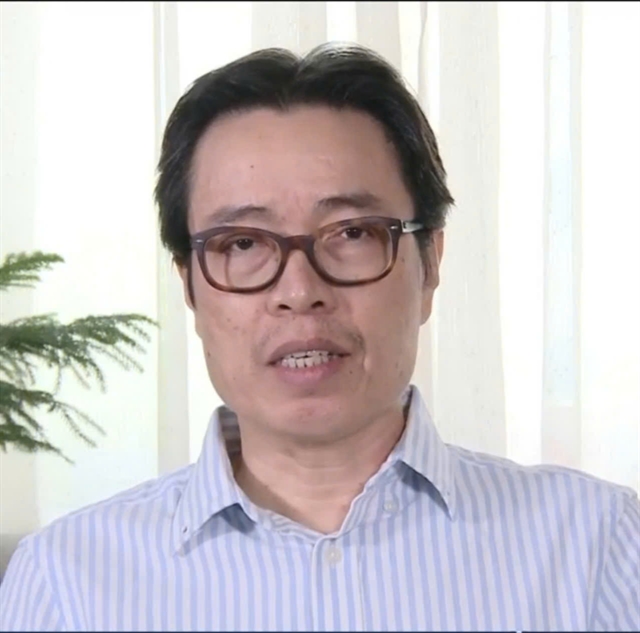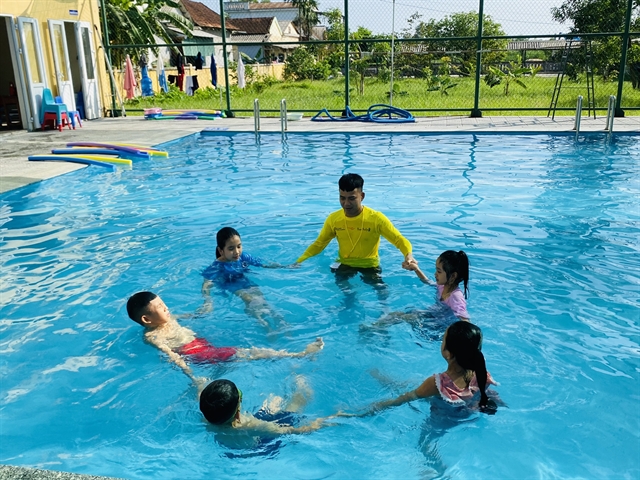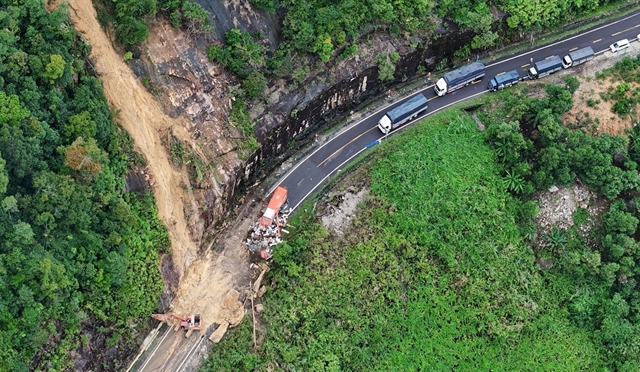 Society
Society

Concerned agencies have been trying to apply preventive interventions to reduce the number of children who die of drowning.
Việt Nam News reporter Lê Hương spoke to Đặng Hoa Nam, director of the Children Department, under the Ministry of Labour, War Invalids and Social Affairs, on the issue.
 |
| Đặng Hoa Nam, director of the Children Department, under the Ministry of Labour, War Invalids and Social Affairs. VNS Photo Hương Anh |
Among accidents and injuries caused to children, drowning is still one of the main causes of fatalities in Việt Nam. Has this rate been reduced recently?
Currently we reduce the number of children dying from injuries by about three to five per cent, which corresponds to about 100 cases of children being saved per year.
If compared to 10 or 15 years ago, the number of deaths is relatively low.
In Việt Nam, there were times when it was approximately 3,000 deaths a year, but now we have brought it down to about 2,000. In some years, it was down to just over 1,800 deaths.
Thus, it does not ensure the requirements and goals of controlling accidents and casualties and by all means reduce it faster each year, but we set the goal of reducing from three to five per cent or better 10 per cent of the cases that turn to death due to injury, we feel we have good intervention models.
I want to emphasise that saving young people's lives is a priority and the budget investment for implementing intervention models to prevent child drowning does not really cost too much of the budget, it is only a moderate amount.
We really hope that the People's Committees [Administrations] and People's Councils [Assemblies] in the provinces and cities will quickly have resolutions so that we can. We appropriately allocate high-level resources, including human resources and local budget resources, to quickly deploy models that can prevent drowning for children.
Thus, the task of saving children's lives is necessary and our current intervention model is effective and has been evaluated by the World Health Organization as the intervention model in Việt Nam that can be replicated and expanded to a number of countries in the region and the commitment of the Vietnamese governments at levels is also highly appreciated.
However, we want to transfer this commitment to local governments, to the People's Committees, People's Councils of provinces and cities, and to the community to strengthen intervention models, monitor and strengthen community cooperation to provide warnings, alerts and establish a safe living environment for children.
And we want to emphasise that in Việt Nam, our natural environment, especially for preventing casualties due to drowning, is really unfavourable and many objective causes lead to this. It is difficult for us to reduce the situation, that is, poverty in children, especially in terms of drowning.
We believe that objective reasons cannot be used to justify the responsibilities of governments at all levels, the responsibilities of mass organisations, the responsibilities of families and schools must establish a safe living environment for children and that is a current priority issue.
Could you talk about your plans from now to the end of this year to complete this year’s targets?
Currently, there are multiple decisions of the Prime Minister, projects, programmes, plans and implementation of policies in different fields, for example, education and health care and then social protection and child protection.
However, we are at a very important point.
Because there are many projects, programmes and decisions of the Prime Minister as well as the authorities of provinces and cities that are preparing to reach the finish line and by 2025 we will evaluate our performance.
Our current problem is to strengthen inspection, urging and guidance so that provinces and cities can invest and deploy intervention models and solutions following the Prime Minister's decisions to promote the achievement of individual goals.
Another very important content that we are preparing for next year is that we will have Communist Party congresses at all levels, especially Party Congresses of provinces and cities, which we also hope to enhance people’s awareness of lessons, policies, projects and plans for children, especially in solving children's issues, the spirit of Directive 28 issued on December 25, 2023 by the Politburo on strengthening the care, education and protection of children, meeting the requirements of developing a prosperous and happy country.
After five years of cooperation with the Bloomberg Philanthropies, we have a programme to prevent child drowning. Do you have any comments on programmes like this and do you want to replicate it in the future?
First of all, talking about support projects to reduce casualties and drowning accidents in Việt Nam, we must evaluate the starting point of this project from the sponsor Bloomberg Philanthropies and the Global Health Advocacy Foundation under the Campaign for Tobacco-Free Kids. The discussion and exchange to find the best models and solutions have been carried out and until now, in Việt Nam we have found quite effective solutions and models in areas where the projects were implemented and project interventions took place.
 |
| A teacher and his students at a school in the central city of Huế during a swim class in the framework of a project funded by the Bloomberg Philanthropies. Thousands of school students have learnt how to float in water and basic swimming skills. Photo courtesy of the Campaign for Tobacco-Free Kids Việt Nam |
Bloomberg Philanthropies has also committed to continuing to support Việt Nam in the next phase so that we can maintain and enhance the sustainability of intervention models.
On a national scale, only then will the sustainability of the project be ensured and the investment efficiency of the project be guaranteed.
Currently, we only have 15 provinces that have implemented this project, plus about a number of provinces having other projects that also target the issue of drowning prevention for children.
In order to replicate the solutions and intervention models of the project to save children's lives, it is necessary to have budget resources and assigned human resources from localities. So it is under the authority of the People's Committee and People's Council at the provincial and municipal levels to properly allocate local budget resources and how to organise more safe swimming classes. VNS




